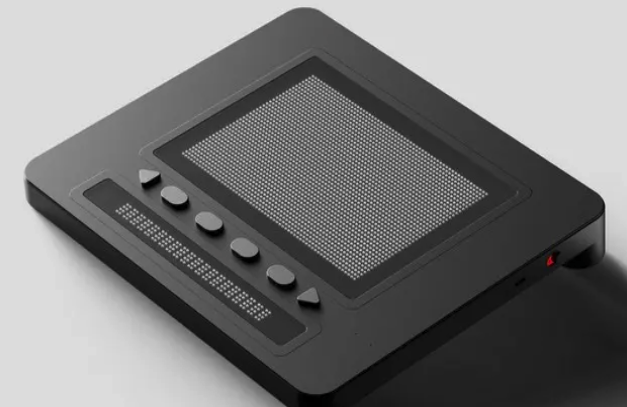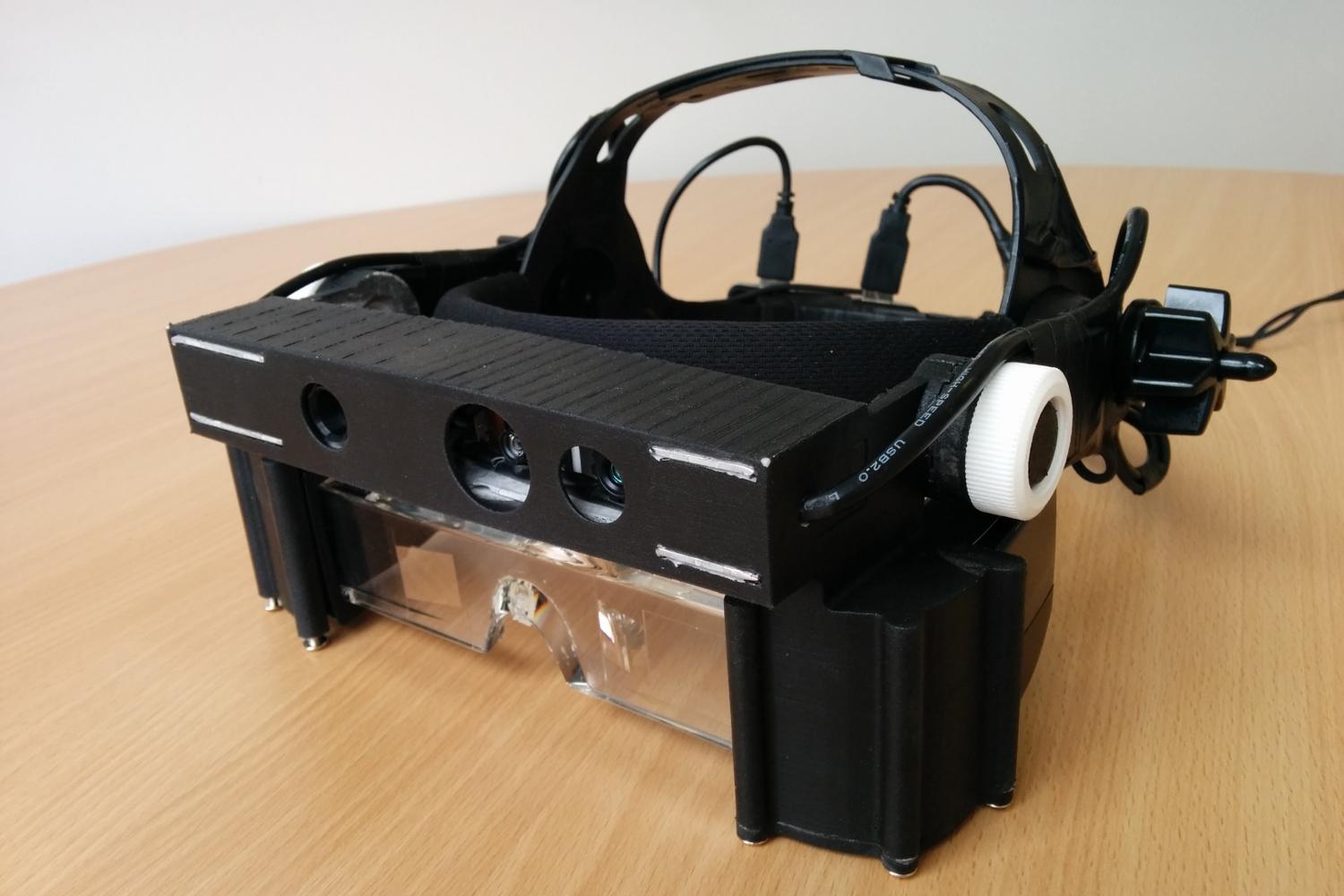A Guide to Life-Changing Assistive Innovation for the Blind and Visually Impaired
The development of assistive innovation has introduced a transformative age for individuals who are blind or visually impaired, offering devices that boost freedom and enrich daily experiences. Innovations such as smart navigating tools and AI-driven applications are redefining just how individuals engage with their surroundings, while easily accessible analysis remedies and clever home modern technologies guarantee to additional raise the top quality of life. As these innovations remain to develop, one need to think about not only their capabilities yet additionally their effect on promoting independence and inclusivity. What does this mean for the future of ease of access?
Smart Navigation Equipment
Smart navigating tools are transforming the method people who are aesthetically damaged or blind connect with their environment. These advanced innovations, which integrate general practitioners, audio feedback, and haptic signals, offer individuals with essential details about their surroundings, enhancing their independence and movement.
One noticeable example is the use of clever canes equipped with sensors that identify challenges and supply real-time responses via resonances or audio signs. These devices enable individuals to navigate complex environments, such as busy streets or crowded public rooms, with raised self-confidence. In addition, wearable gadgets, such as wise glasses, are being established to assist in recognizing faces, reading message, and recognizing things, additionally increasing the individual's spatial awareness.
Furthermore, clever navigating devices are progressively incorporating expert system to examine data and adapt to customers' choices. This individualized method not only boosts navigating efficiency yet additionally promotes a feeling of empowerment amongst individuals. As technology remains to development, the potential for clever navigation tools to produce a more easily accessible and inclusive globe for individuals that are blind or visually damaged continues to be appealing, ultimately improving their daily experiences and communications.
Innovative Mobile Applications
Mobile applications are emerging as powerful tools for aiding individuals that are blind or visually damaged, supplying a variety of capabilities that improve daily living. These apps harness advanced modern technology to help with day-to-day tasks, enhance accessibility, and promote freedom.
One category of cutting-edge mobile apps focuses on aesthetic recognition. Applications like Be My Eyes link customers with sighted volunteers via video telephone calls, enabling real-time help for jobs such as checking out tags or browsing unfamiliar atmospheres. Applications like Seeing AI make use of artificial intelligence to explain surroundings, checked out text, and determine things, giving users with vital info at their fingertips.
An additional significant area is navigating and orientation. Applications such as Aira and Nearby Explorer offer audio assistance, assisting individuals navigate urban spaces with ease. They offer individualized help, enabling for a much more positive exploration of the atmosphere.
Additionally, health and wellness and wellness applications provide to details demands, such as medicine administration and physical fitness tracking. These applications aim to foster a holistic approach to wellness, making sure that customers can keep their wellness separately.
Wearable Assistive Tools
Wearable assistive devices represent a substantial advancement in innovation developed to support people that are blind or aesthetically impaired. These tools boost wheelchair and independence by providing real-time responses regarding the surrounding environment. Amongst the most notable wearable technologies are clever glasses furnished with video cameras and sensing units, which can determine challenges and relay critical info through audio signs.

One more ingenious alternative consists of wrist-worn gadgets that utilize ultrasonic waves to detect barriers and give navigational help. These devices often feature adjustable setups, enabling customers to tailor the signals to their particular requirements.
The assimilation of expert system in wearable assistive technology is also significant, as it constantly improves the precision and responsiveness of these devices. On the whole, wearable assistive gadgets are changing the lives of the blind and visually damaged, fostering higher autonomy and improving quality of life with innovative options.
Available Checking Out Solutions
Accessible reading remedies play a crucial function in making it possible for individuals that are blind or visually impaired to involve with text across numerous formats. These options incorporate a series of tools and modern technologies developed to boost analysis experiences, from typical print materials to digital web content.
One prominent service is browse around here Optical Personality Acknowledgment (OCR) technology, which converts published message right into digital style, enabling customers to pay attention to or read the content utilizing display readers. Additionally, specialized e-readers furnished with text-to-speech capacities supply personalized analysis experiences, enabling users to change font sizes and background shades for boosted visibility.
Another effective method is braille screens, which supply responsive responses by transforming electronic message right into braille. This permits people to go through touch, fostering greater independence and access to literature. Mobile applications designed for reviewing checked books or documents can encourage customers with immediate access to a large collection of products (Assistive technology for the blind).

Smart Home Technologies
Smart home technologies have reinvented the method people that are blind or visually damaged connect with their living atmospheres, boosting both independence and security. These cutting-edge services take advantage of automation and connection to create an obtainable living room customized to the requirements of individuals.
Smart speakers and voice-activated assistants offer hands-free control over various devices, allowing customers to readjust lights, temperature, and safety and security measures via basic voice commands. This performance minimizes dependence on sighted help and fosters a feeling of freedom. Additionally, clever lighting systems can be tailored to deliver acoustic feedback or responsive hints, allowing individuals to browse their homes better.
In addition, safety systems geared up with smart cameras and sensing units can send real-time informs to users, boosting personal safety and security without necessitating aesthetic confirmation. Automated door locks supply assurance, permitting individuals to secure their homes easily.
Integrating wise home technologies not only boosts daily living yet also motivates social communication with attached devices - Screen readers for the blind. With recurring developments in assistive modern technology, the future shows up promising, as even more remedies will emerge to additional equip people that are blind or visually damaged, guaranteeing an extra independent and inclusive lifestyle
Final Thought
In final thought, the innovations in assistive technology for the aesthetically damaged and blind stand for a considerable leap toward boosting freedom internet and top quality of life. Smart navigating tools, innovative mobile applications, wearable devices, available reading solutions, and clever home modern technologies jointly promote an inclusive setting. This assimilation of innovation not only boosts flexibility and everyday living but also encourages people to engage totally with their environments, promoting better freedom and participation in culture.
Advancements such as wise navigating gadgets and AI-driven applications are redefining click for info how customers interact with their environments, while accessible analysis remedies and wise home technologies assure to further boost the high quality of life. As technology proceeds to advance, the possibility for smart navigating tools to produce a more obtainable and inclusive globe for individuals who are blind or aesthetically impaired stays promising, eventually reshaping their everyday experiences and communications.
Wearable assistive devices stand for a significant improvement in technology created to sustain individuals that are visually damaged or blind. Amongst the most notable wearable innovations are clever glasses equipped with cams and sensing units, which can recognize obstacles and relay vital information through audio hints.
Smart navigating tools, cutting-edge mobile applications, wearable tools, available reading options, and clever home technologies collectively promote a comprehensive setting.